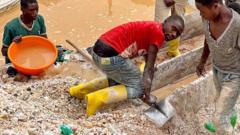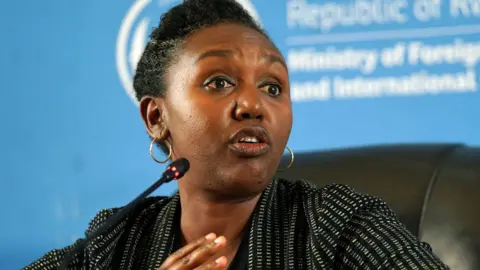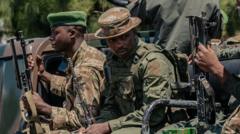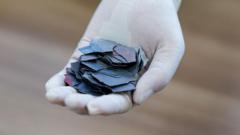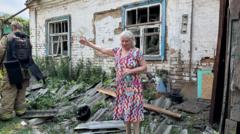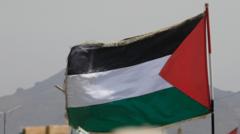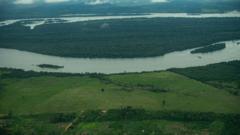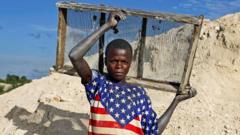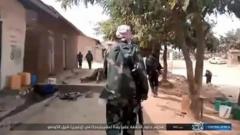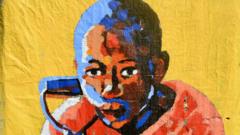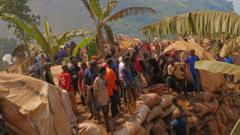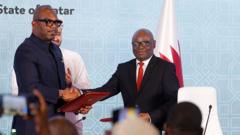The Rubaya mine, situated in the lush Masisi Hills of North Kivu province, has become a focal point in the ongoing conflict within the Democratic Republic of Congo (DRC), particularly as it is crucial for the global mobile phone supply chain. Recently, the M23 rebel group granted the BBC a rare opportunity to explore this expansive site, revealing a hive of activity where thousands of miners toil tirelessly to extract coltan ore.
With more than 10,000 individuals working at the mine daily, the landscape is a maze of pits and tunnels. Some miners dig deep underground while others labor above ground, transporting heavy sacks of ore to processing areas where they manually wash and filter the valuable mineral. According to mine supervisor Patrice Musafiri, the site has transformed since the M23 took control in April 2022, as they work to provide safe conditions for the miners.
Conditions, however, are harsh. Miners like Peter Osiasi describe the oppressive temperatures and the peril of working in potentially harmful environments. Yet, for many, like Osiasi, mining has afforded them the means to support their families and change their lives for the better. The importance of this economic opportunity cannot be overstated, as the area holds an astounding 15% of the world’s coltan supply.
While the visit to the Rubaya mine came shortly after a ceasefire was announced in Washington, the political landscape remains fraught with complexity. The longstanding tension between the DRC and neighboring Rwanda continues to affect the region, as accusations of support for rebel groups swirl amid ongoing negotiations. The M23 controls significant territories, including key cities, while facing international scrutiny over its operations.
Supervised by the M23, mine operations have reportedly been normalized, with claims of safety measures and regulatory departments established to address disputes and hazards. Nonetheless, many miners reveal the low pay they receive, a stark contrast to the wealth generated from the coltan extracted from their labor.
As the DRC's government seeks foreign investments, notably from U.S. companies, the mining sector could see changes aimed at improving local economies. Yet, with the M23 still wielding influence, the path forward remains unclear, and local stakeholders express apprehensions about how these resources will be managed.
A tentative peace process is underway, but for miners like Osiasi, the priority is clear: stable jobs with better pay and an end to the conflict that has displaced countless families. As discussions between armed factions and the DRC government continue, the hope for a lasting resolution grows amidst the grit and grind of life at the Rubaya mine.

